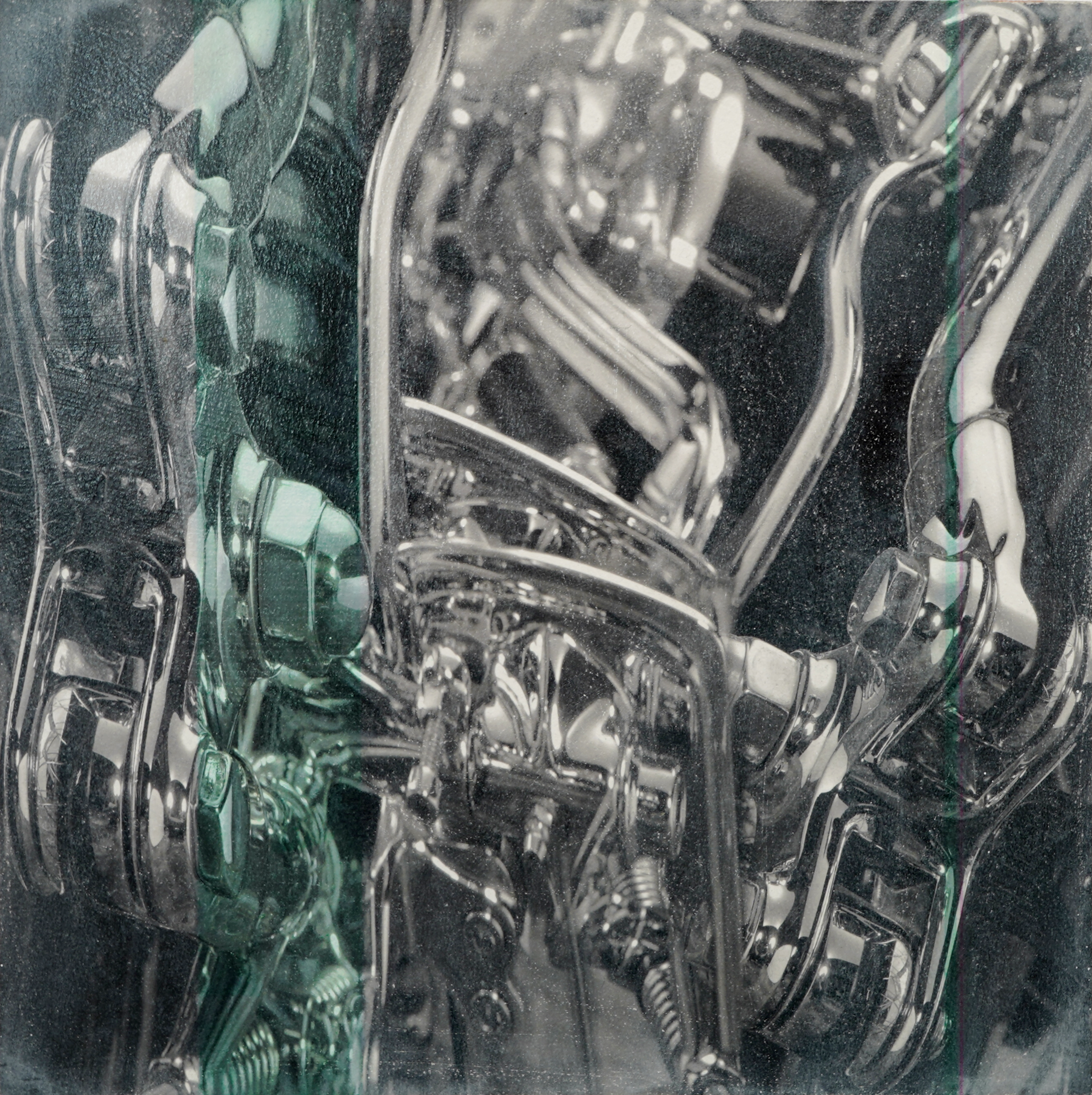AI MAKITA
Ai Makita's work sits on the boundaries of organic and inorganic. In 'Metabolism / Tokyo-London', Makita melds images of Tokyo and London as viewed through a reflective object. Manipulating them to bend and warp unnaturally, the two landscapes become unrecognisable aside from the neon flashes of a cityscape. Using a combination of gel transfers and hand-painted oils, the artist produces reverent paintings of the inner workings of machines. Organ-like, the parts twist around each other as Makita uses the 'machine' to explore the human. At a glance- the intricate studies of engines become cities or ecosystems, their scale shifting between vast and minuscule. The bend in a piece of metal or space between parts of machinery becomes a chasm, the viewer verging on the edge of a cliff, creating the sense of the sublime. Makita pushes this relationship further in recent works. Feeding images of objects and cities to Al, the artist has begun making images of 'hyper-objects' a term coined by Timothy Morton; "entities of such vast temporal and spatial dimensions that they defeat traditional ideas about what a thing is in the first place" (Morton, 2013). Through this process, Al becomes almost animal-like as it is trained by the artist to produce images which increase in accuracy as it learns







